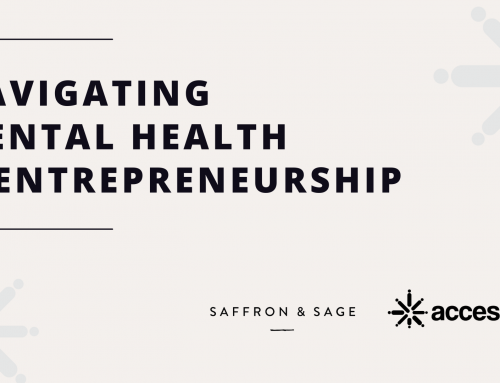Every business needs startup capital and looking into getting a startup business loan is a great first step. The startup phase is one of the most challenging in business, especially for a first-time business owner. Entrepreneurs may be skilled in their trade but often the administrative side of running a business comes with a steep learning curve.

One of the most disheartening things to learn is that your bank will likely not finance your startup business. Most traditional banks and credit unions require at least two years of tax returns for a business loan. There are many online lenders who will finance startups. But with high annual percentage rates (APR) or daily payment requirements, your new business’ cash flow is in jeopardy.
Fortunately, there are non-profit Community Development Financial Institutions (CDFI), like Accessity, who are willing to finance your startup and provide you with resources and support.
Here are five easy steps on how to get a startup business loan.
1. Have experience in the industry or get some
With industry experience, you’ll know what to expect. Knowing industry standards, what your competition is doing well (or not), and what opportunities exist will be beneficial. The more direct experience you have, the lower the risk for the lender.
If you don’t have robust experience, now is the time to work on getting some. For example, if you want to start a food truck, work in a truck part-time. Volunteering your time is another option. You’ll gain experience as you learn what it takes to run a food truck. You may be working some early mornings, learning how commissaries work and how to prep food in a truck. You’ll also learn how to interact with customers, source the best locations, be creative in diversifying revenue streams and more.
If you already work in the industry but don’t have management experience, ask for more responsibility. You can learn how to manage inventory or write bids. Ask A LOT of questions and observe and take notes while you’re on the job.
2. Have a strong personal source of income
If you’re thinking about quitting your job to start your own business, think twice. You’ll need a steady source of income to manage your existing obligations. You’ll also need to account for the new business expenses and loan payment. It may make it more difficult to scale your business at the beginning. You’ll essentially be managing two jobs. But as you start to build clientele, positive reviews, experience, and revenue, you’ll be in a better position to make the transition from your employment to your business.
Lenders may consider co-borrowers like a spouse or a parent or a business partner, who have strong personal income that can offset your loss of income if you decide to quit your job to pursue your business venture. If you plan to live off savings while your business becomes profitable, consider that in addition to your personal monthly obligations, there may be many unforeseen, unbudgeted business expenses during the startup phase that can quickly deplete your nest egg. That’s why lenders prefer cash flow over savings, though having cash reserves will help strengthen your loan application.
3. Ensure your personal credit is in good shape
Check your credit report at www.annualcreditreport.com to look for any reporting mistakes or fraudulent activity. Consumers can generally access one free credit report per year, however during the COVID-19 pandemic, you can get a free weekly credit report from all three credit agencies, Experian, Equifax, and Transunion, until April 20, 2022. If there are mistakes on your credit report, Credit.org’s the Consumer Guide to Good Credit has robust information about how to dispute errors to improve your credit.
Accessity provides free credit and financial coaching to our loan clients and interested loan applicants through our TrustPlus partnership. If you are interested in free credit and financial coaching to improve or strengthen your credit, contact the Accessity team here.
4. Write a strong business plan
A business plan serves as a road map for the startup including the vision of the business, the plan for operations and marketing, financial goals, and more. It also serves to demonstrate to a business lender how prepared a business owner is to start their business and the viability of the business idea. Keep it concise, so that the most important information is easy to find and evaluate; lenders don’t have a lot of time to read lengthy business plans.
5. Be prepared to share in the risk
From investing your own money or having savings ready to invest in your business to having tangible assets available to use as collateral (such as a home or a vehicle), be prepared that business lenders will want to see you sharing in the risk of starting your own business. Keep in mind that at the end of the day, the lender wants you to be as successful as you do.
This is intimidating. Are there business loan resources that I can use to help?
If you are looking to start a new business or have recently started a new business and are looking for a business loan or resources, Accessity can help! We offer small business loans up to $100,000 and access to a business resource community to entrepreneurs in Southern California.
If you’d like to see if you qualify for a business loan, contact our Accessity team here.
This information is shared for educational purposes only. Please consult legal, tax, credit, or financial experts for specific guidance.




